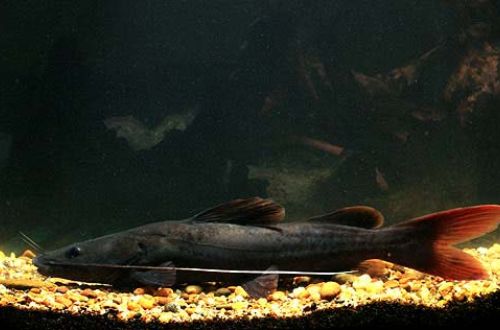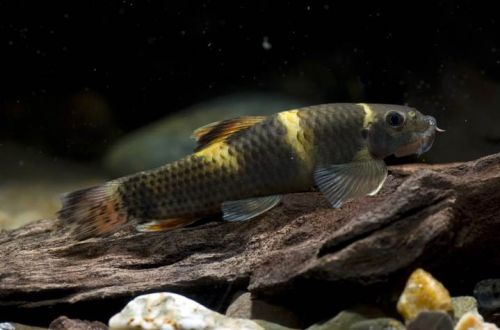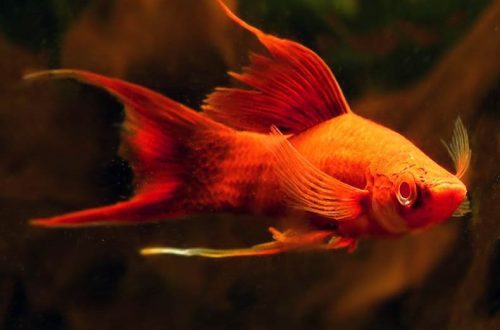
Hemibagrus redtail
The Asian red-tailed catfish or Hemibagrus, scientific name Hemibagrus wyckioides, belongs to the family Bagridae (Orca catfishes). A very large aggressive predatory fish is not the best choice for a beginner aquarist.

Contents
Habitat
They originate in Southeast Asia. In the descriptions, the type of locality is indicated as “Cambodia”, however, this species is widely distributed in the Mekong and Chao Phray (Menam Chao Phraya) river basins and, accordingly, is found in southern China, Laos, Vietnam, Cambodia and Thailand. Inhabits the main channels of the rivers, including regions with a rapid current. During periods of the wet season, it swims to flooded coastal areas of tropical forests.
Brief information:
- The volume of the aquarium – from 1000 liters.
- Temperature – 19-29°C
- Value pH — 6.0–8.0
- Water hardness – 1–21 dGH
- Substrate type – any
- Lighting – subdued
- Brackish water – no
- Water movement – little or no
- The size of the fish is up to 100 cm.
- Food – live fish and crustaceans
- Temperament – aggressive
- Content single
Description
Adults reach a length of about a meter and a weight of 70–80 kg. The largest specimen known to date was 1.3 meters. The color is dark or grey. The fins have reddish edges and the tail is completely red. In young fish, the color is dark gray. Sexual dimorphism is weakly expressed, males and females are practically indistinguishable externally.
Food
In nature, it belongs to predatory species, the basis of the diet is other fish and crustaceans. In an artificial environment, nutrition must be appropriate. Young catfish can take large earthworms. Feed 1-2 times a week.
Do not use animal products (chicken, beef, etc.), they are difficult to digest and in the long term cause excessive fat deposition and even degeneration of the digestive organ.
Maintenance and care, arrangement of the aquarium
The Asian redtail catfish, due to its size, needs very large tanks, numbering over 1000 liters. The design repeats the features of the relief of the river bottom and contains sandy soil with heaps of stones, boulders and numerous snags.
Large fish produce a lot of waste. Feed residues are also an additional source of contamination. To maintain the balance of the aquarium ecosystem, regular replacement of part of the water with fresh water is carried out and efficient filtration systems are installed. As a rule, the entire set of equipment with communications takes up no less space than the tank itself.
The installation and maintenance of such aquariums requires considerable financial costs and a lot of experience and goes beyond the scope of amateur aquarism.
Behavior and Compatibility
Aggressive territorial fish, not compatible with most other species. Any fish that can fit in her mouth will certainly be eaten.
Breeding / breeding
At the time of writing, no cases of successful breeding in aquariums have been recorded. For commercial purposes, breeding is carried out using hormonal injections. Under these conditions, the observed incubation period is 30–38 hours. The fry that appear are only 5 mm long and in the first three days they feed on the remnants of the yolk sac. A month later, young catfish already reach 4 cm or more.
Fish diseases
Being in favorable conditions is rarely accompanied by a deterioration in the health of fish. The occurrence of a particular disease will indicate problems in the content: dirty water, poor quality food, injuries, etc. As a rule, eliminating the cause leads to recovery, however, sometimes you will have to take medication. Read more about symptoms and treatments in the Aquarium Fish Diseases section.





